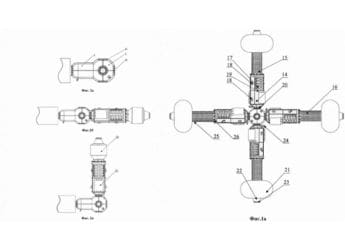- Home
- Science
- Science News
- Strange New Worm Found Off Spain’s Coast Can Shrinks to One Fifth Its Size
Strange New Worm Found Off Spain’s Coast Can Shrinks to One-Fifth Its Size
Newly found Pararosa vigarae, the accordion worm, uses DNA and morphology to help scientists solve a major taxonomy puzzle in ribbon worms.

Photo Credit: Pixabay/Camera-man
Accordion Worm Pararosa vigarae from Spain Shrinks to One-Fifth Its Size
Recently found accordion worm Pararosa vigarae, a new genus and species of ribbon worms and a comparatively less-known group of invertebrates, has amazed the researchers because of its unique ability to squash up like an accordion to a staggering one-fifth of its normal body length. It was discovered from Ría de Arosa in the Northwest coast of Spain, where it lurks under rocks in the subtidal zone at a depth of 30 metres (98 feet). Combining morphological data with DNA analysis techniques, researchers were able to overcome the taxonomical challenge of identifying this worm.
Classification challenges
According to the study published in Royal Society Open Science, accordion worms belong to the phylum Nemertea, a group of predatory worms that use venom to immobilize their prey. They pose serious challenges for taxonomical studies due to the scarcity of external morphological features.
Taxonomy is the study of the classification and identification of the living world. Traditionally, external morphological features are considered the criteria of this study. However, Nemerteans have very few distinctive visible features to rely on. To overcome this, scientists tried to consider the internal anatomy as a potential marker, but this process turned out to be very complex and inconvenient. Eventually, this process became obsolete, resulting in Nemerteans remaining a lesser-known phylum with currently described 1,350 species.
Genetic Analysis
The study describes that molecular phylogenetic analyses were performed based on partial sequences of 16S rRNA, 18S rRNA, 28S rRNA, cytochrome c oxidase subunit I (COI), and histone H3 gene markers that indicated the newly identified specimens represent a new genus and species of heteronemertean in the family Lineidae.
Imaging experiments revealed that the accordion worm contracts its body to form regular rings that are annular epidermal constrictions that remain visible even when the animal is fully stretched. The number of rings varies with the size of the worm—for instance, the largest specimen collected had 60 rings when fully stretched.
Get your daily dose of tech news, reviews, and insights, in under 80 characters on Gadgets 360 Turbo. Connect with fellow tech lovers on our Forum. Follow us on X, Facebook, WhatsApp, Threads and Google News for instant updates. Catch all the action on our YouTube channel.
- Samsung Galaxy Unpacked 2025
- ChatGPT
- Redmi Note 14 Pro+
- iPhone 16
- Apple Vision Pro
- Oneplus 12
- OnePlus Nord CE 3 Lite 5G
- iPhone 13
- Xiaomi 14 Pro
- Oppo Find N3
- Tecno Spark Go (2023)
- Realme V30
- Best Phones Under 25000
- Samsung Galaxy S24 Series
- Cryptocurrency
- iQoo 12
- Samsung Galaxy S24 Ultra
- Giottus
- Samsung Galaxy Z Flip 5
- Apple 'Scary Fast'
- Housefull 5
- GoPro Hero 12 Black Review
- Invincible Season 2
- JioGlass
- HD Ready TV
- Laptop Under 50000
- Smartwatch Under 10000
- Latest Mobile Phones
- Compare Phones
- Huawei Nova 15
- Huawei Nova 15 Pro
- Huawei Nova 15 Ultra
- OnePlus 15R
- Realme Narzo 90x 5G
- Realme Narzo 90 5G
- Vivo S50 Pro Mini
- Vivo S50
- Asus ProArt P16
- MacBook Pro 14-inch (M5, 2025)
- Huawei MatePad 11.5 (2026)
- OnePlus Pad Go 2 (5G)
- Huawei Watch 10th Anniversary Edition
- OnePlus Watch Lite
- Acerpure Nitro Z Series 100-inch QLED TV
- Samsung 43 Inch LED Ultra HD (4K) Smart TV (UA43UE81AFULXL)
- Asus ROG Ally
- Nintendo Switch Lite
- Haier 1.6 Ton 5 Star Inverter Split AC (HSU19G-MZAID5BN-INV)
- Haier 1.6 Ton 5 Star Inverter Split AC (HSU19G-MZAIM5BN-INV)












